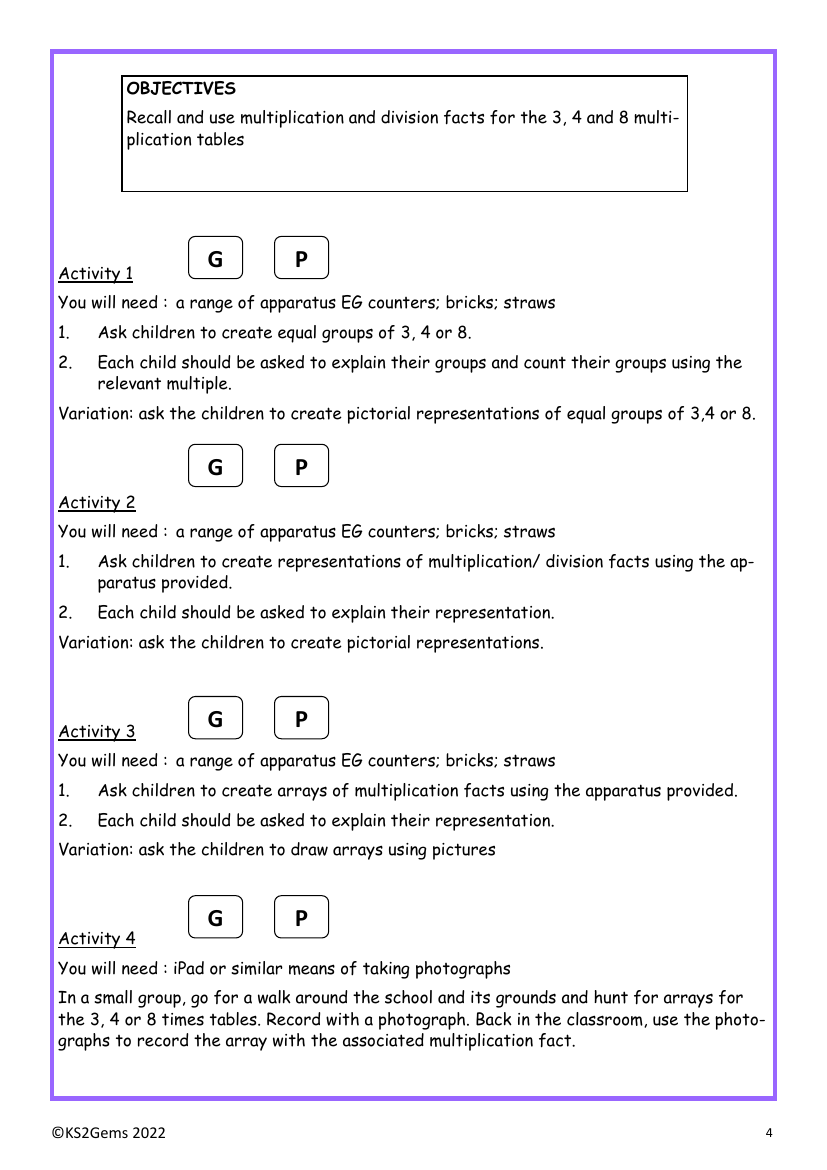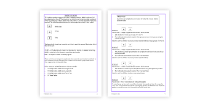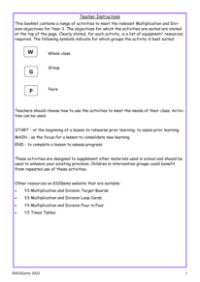Facts from 3, 4, 8 times tables worksheet

Maths Resource Description
The worksheet provides a series of engaging activities designed to help children recall and use multiplication and division facts for the 3, 4, and 8 times tables. In Activity 1, children are encouraged to create equal groups of 3, 4, or 8 using various apparatus like counters, bricks, or straws, and then explain and count their groups by the relevant multiples. A variation of this activity involves drawing pictorial representations of these equal groups. Activity 2 extends this by having children represent multiplication and division facts with the apparatus, explaining their methods, and optionally creating pictorial representations. Activity 3 further reinforces understanding through the creation of arrays with the apparatus, with the option to draw these arrays as pictures.
Activity 4 takes learning outside the classroom as children, equipped with iPads or similar devices, capture photographs of arrays found around the school that correspond to the 3, 4, or 8 times tables. These images are then used back in the classroom to associate with the relevant multiplication facts. In Activity 5, children participate in a dynamic counting game where they stand and count multiples aloud, with those making mistakes sitting down until no one is left standing. The game includes variations such as changing counting direction on a 'Switch' command. Activity 6 introduces a playful twist to counting with the 'Fizz Buzz' game, where children replace multiples of a chosen number with the word 'Fizz', 'Buzz', or 'FizzBuzz' for combinations of multiples, again sitting down upon error. Activity 7 uses a counting stick with intervals marked to practice counting forwards and backwards in steps of the chosen multiple, with variations for added challenge. Activity 8 involves sorting multiple cards in the correct order, with or without verbal communication, and identifying missing multiples. Finally, Activity 9 invites children to shade multiples of 3, 4, or 8 on a hundred square and observe emerging patterns. These activities aim to solidify the children's fluency in using multiplication and division facts within a fun and interactive learning environment.

